We’ve reached a saturation point with subscription services, 96% of US consumers have at least one subscription* for everything from streaming to meal kits to fashion boxes. Even as the overall subscription service market grows, customers say they are canceling subscriptions twice as fast as they are taking on new ones. In this landscape, it is more important than ever for subscription services to focus on customer retention.
Growth teams focused solely on net new subscriber growth at any cost, while neglecting customer retention have proven ineffective in driving sustained growth and profitability. In order to overcome these obstacles, subscription services must embrace a new approach centered around experiment-led growth.
The Unsustainable Growth Problem
With a paid performance-focused approach, growth teams typically operate in phases:
Phase 1: High-Performance Bottom of Funnel (AKA Meta + Google)
Phase 2: Emerging Performance Bottom of the Funnel (AKA Dice Rolls)
Phase 3: Brand Advertising (AKA Create a New Bottom of the Funnel)
We’re not going to get into attribution models here, but with a traditional last-click attribution model, the result is something like this as companies mature from Phase 1 to Phase 3:
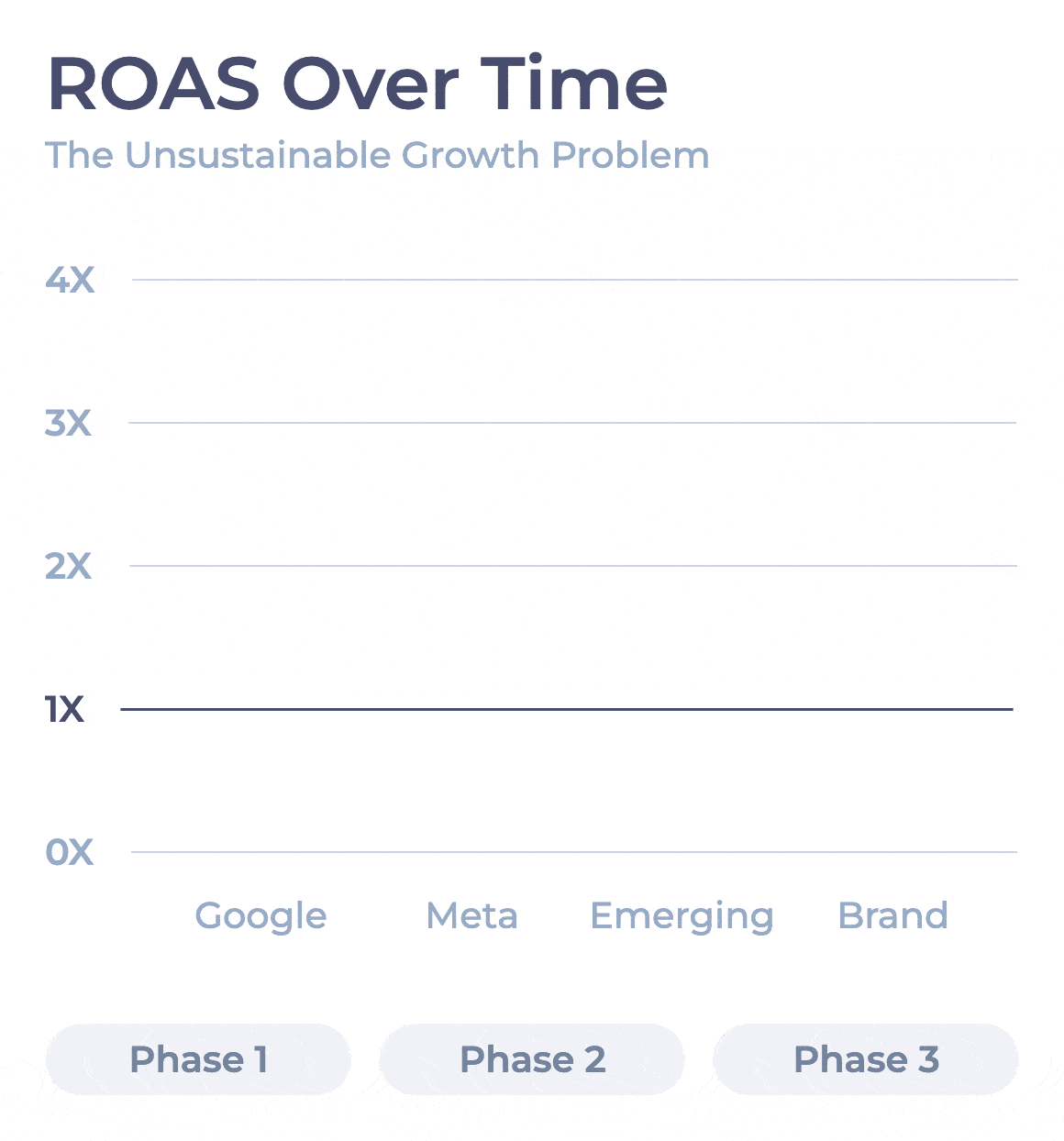
Phase One captures the lowest-hanging fruit. Even if companies hang onto their Google and Meta ROAS, their overall ROAS suffers as they work to acquire increasingly marginal customers at higher costs.
It’s a vicious cycle.
Companies trapped here are increasingly stuck building new products and trying new channels as they fail to find the elusive profit-market fit necessary for long-term success, and eventually, the ROAS proves unsustainable:
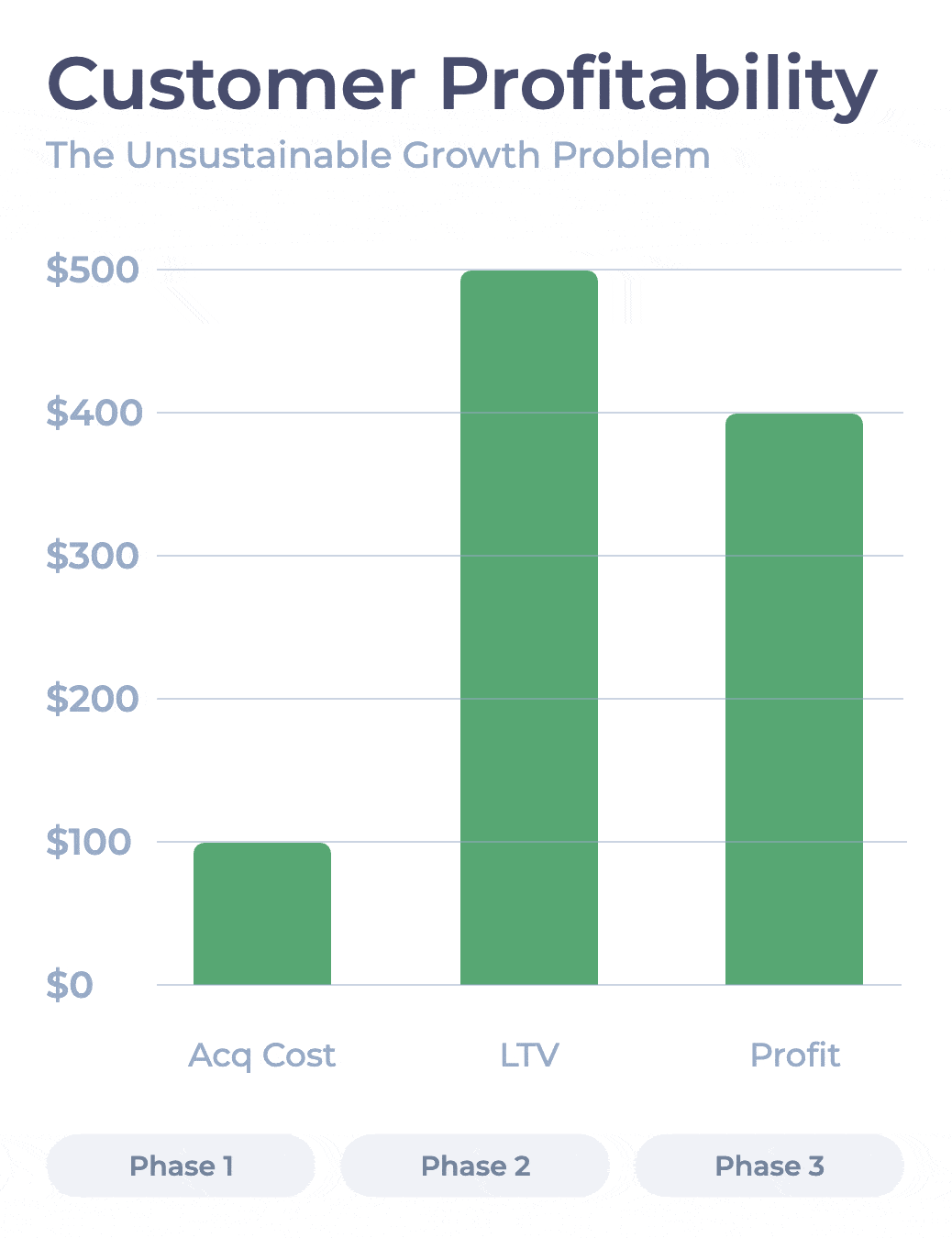
A New Experimentation-Led Growth Loop
To break free from this cycle, subscription services need to adopt a new growth loop that encompasses product quality, diversification, relevance, and expanded value. By optimizing each element of this loop, companies can achieve sustainable growth by meeting customer needs.

Experimentation-led growth allows subscription services to unlock the full potential of the loop. By implementing strategies such as improved customer experience, opportunity analysis for product diversification, audience personalization, and pricing/positioning optimization, companies can maximize each element of the loop.
Companies that adopt this approach are able to find profit-market fit through improvements across core metrics:
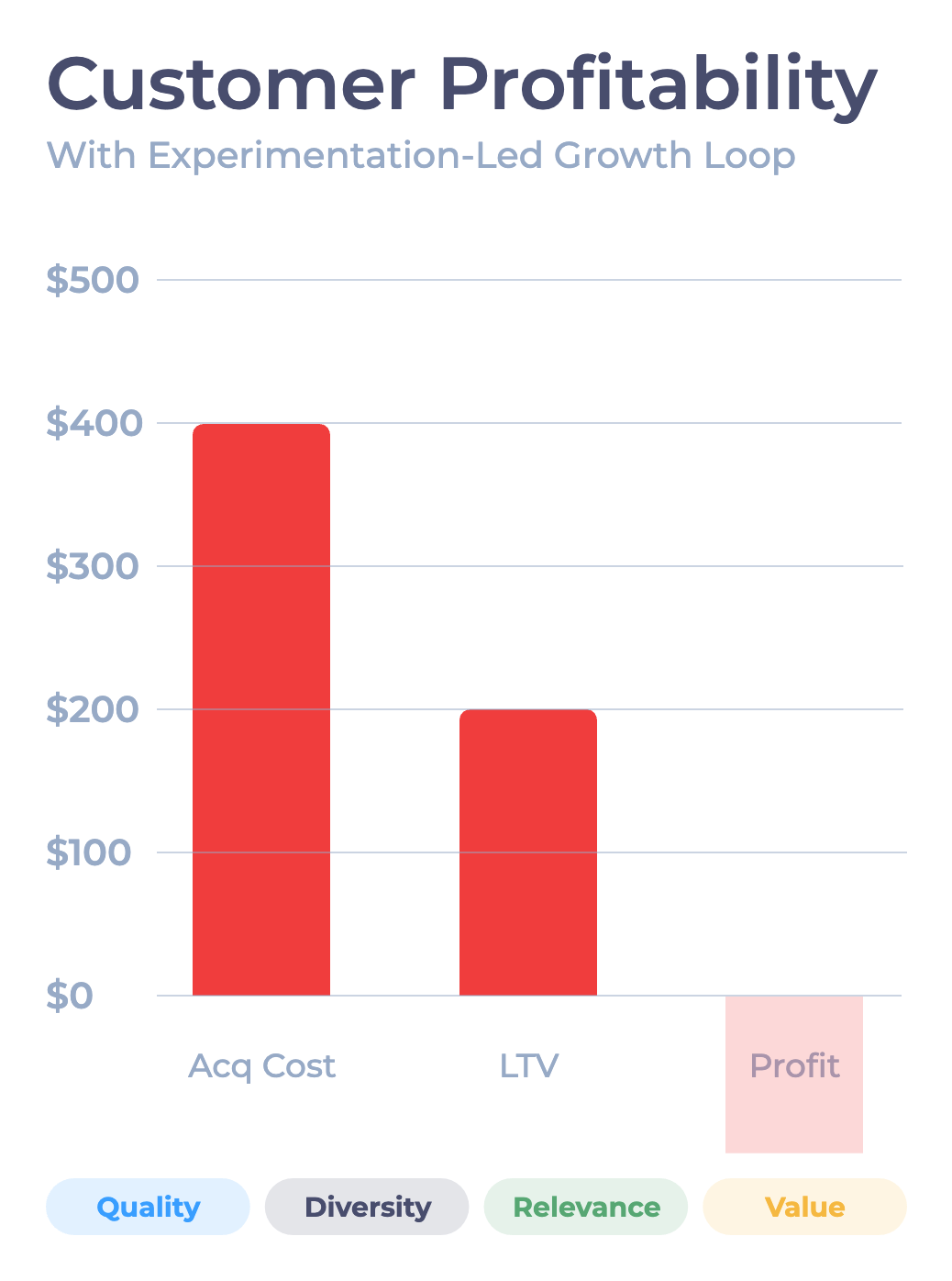
Case Study: How This Growth Loop Drives Impact
By incorporating the experiment-led growth loop, companies ensure they are connecting with customers throughout their journey. Here’s a case study featuring experiments we ran for a streaming service client that goes from the initial sign-up funnel through reacquisition effort campaigns. By considering each journey step and growth loop lever in turn, we can maximize impact at every step, driving 10s of millions in annualized revenue.
Product Diversification – Highlighting Launches
Impact: Audience Diversification + Cost Per Acquisition + Customer Lifetime Value
New seasons and premiers drive a huge uptick in acquisition. By reoriented ads & landing pages towards premier cycles, we were able to increase subscription conversion rates 45% from target audiences. Taking that same theory and applying it to an unsubscribe flow as a reason to stick around for another month had a similar effect, cutting cancellations by 20%.
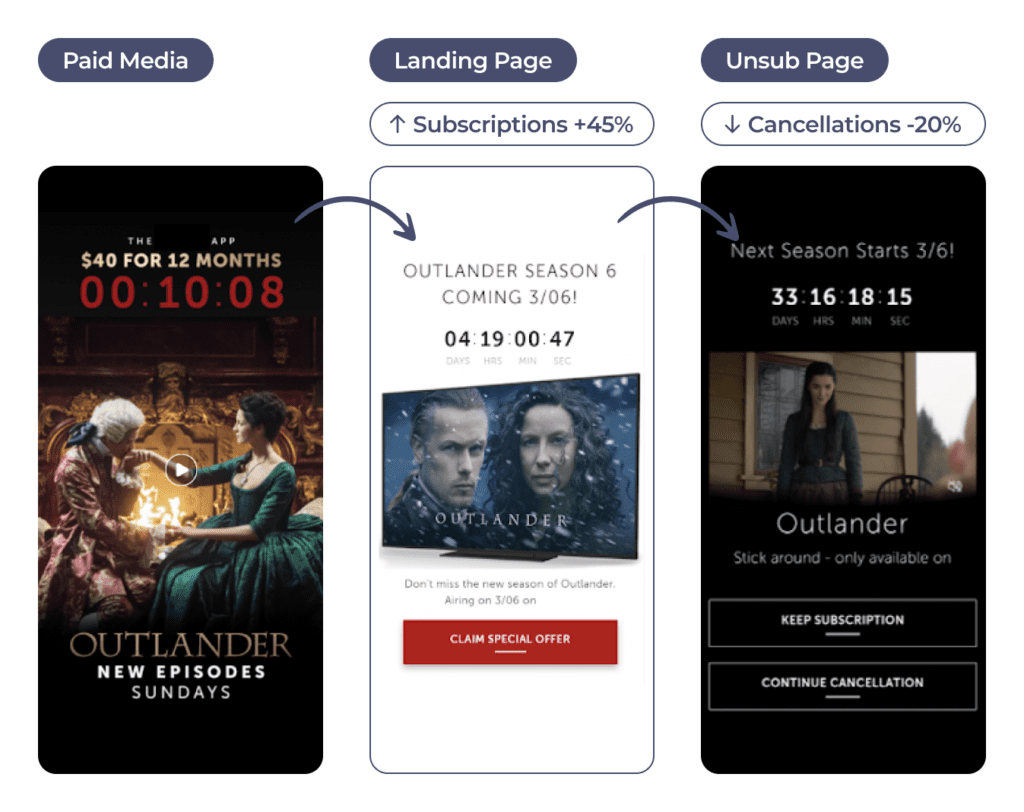 Improved Experience – Building Your Queue
Improved Experience – Building Your Queue
Impact: Customer Lifetime Value
Hours watched is a leading indicator of customer retention for any streaming service. That starts from the moment customers sign up. A change as simple as highlighting shows customers should add to their queue increased total hours watched by 2%, leading to a 1% drop in month one cancellations. We are currently tracking this test longitudinally to see how the long-tail impacts play out.
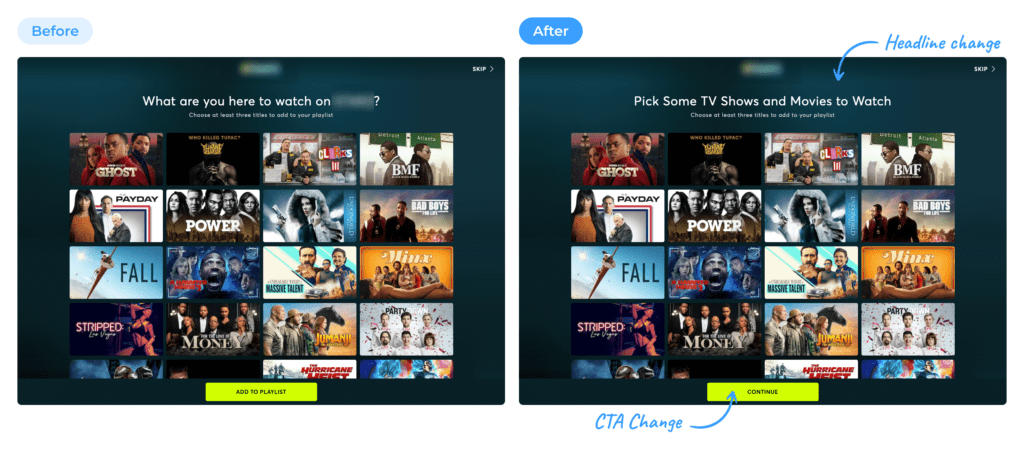
Impact: Customer Lifetime Value
We have to be responsive to customer concerns. By moving from a static unsubscribe funnel to one customized based on customer concerns, we were able to meet more customers where they were, decreasing cancellations 19%.
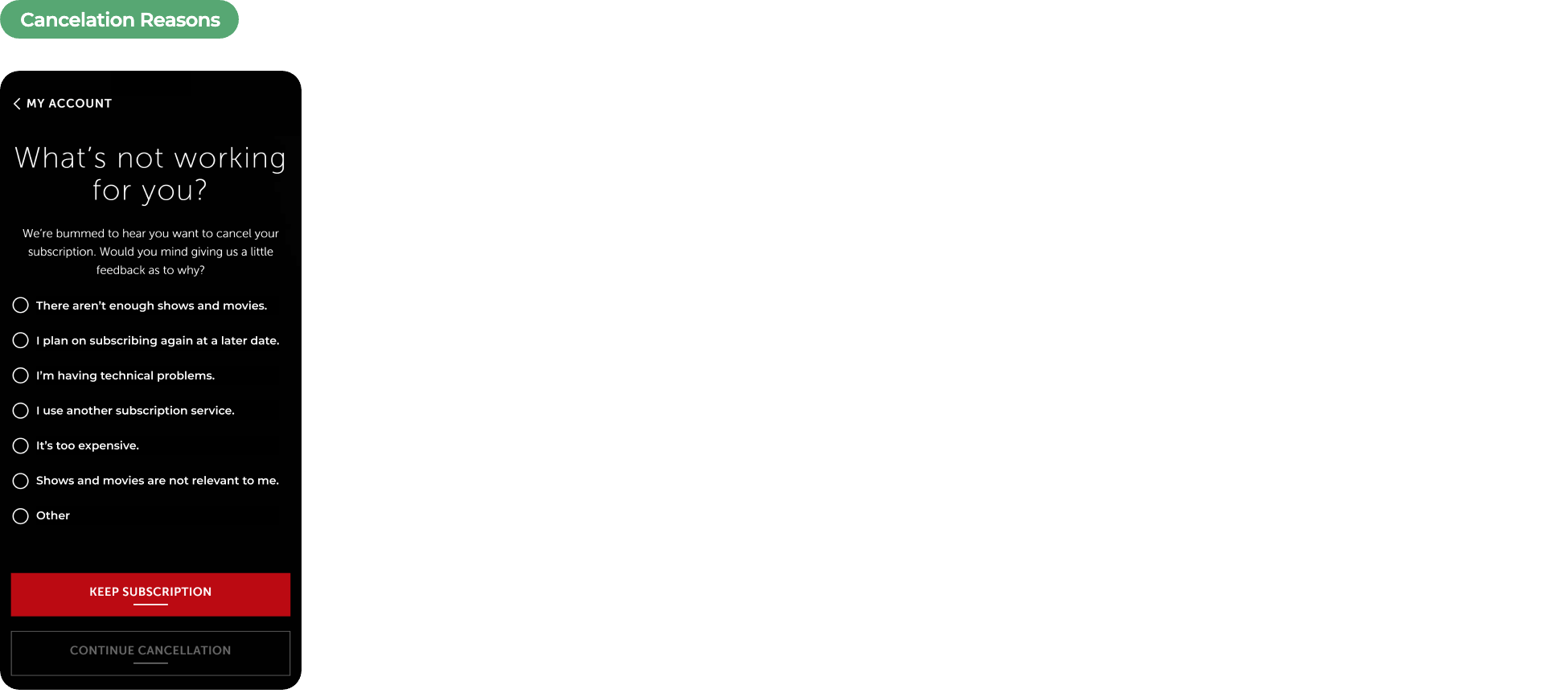
Customer Value – Lapsed Customers Pricing Strategy
Impact: Cost Per Acquisition + Customer Lifetime Value
Maximizing value for lapsed customers is critical. By shifting our pricing strategy towards a longer-term renewal at a discounted rate, we were able to increase overall renewals 13% — with 11% taking a new semi-annual offer.
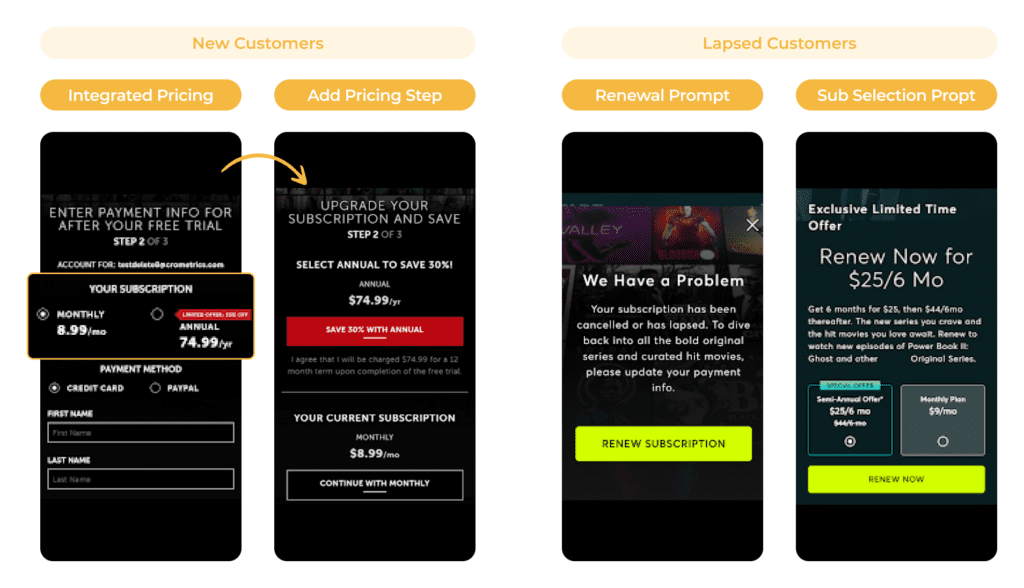
Where to Go From Here
If you’re worried you’re caught on the churn treadmill, here are some next steps you can take to get off it:
Step 1: Know Your KPIs: Do you know core metrics relevant to your business like your customer acquisition cost, customer retention rates, and customer lifetime value by channel?
Step 2: Identify if you have a path to scale profitably: When you review your core metrics, channel performance, and budgets, is there a path to continue scaling profitably?
Step 3: Review your experiment-led growth loop: Are you focused only on acquisition, or are you taking advantage of all the opportunities to add value throughout your customer funnel?
Step 4: Start with one thing: Identify the likely biggest driver for your business you aren’t focused enough on today and build a roadmap around it. If you aren’t sure where to start, we find customer retention to be the most consistent opportunity. Contact us today.

